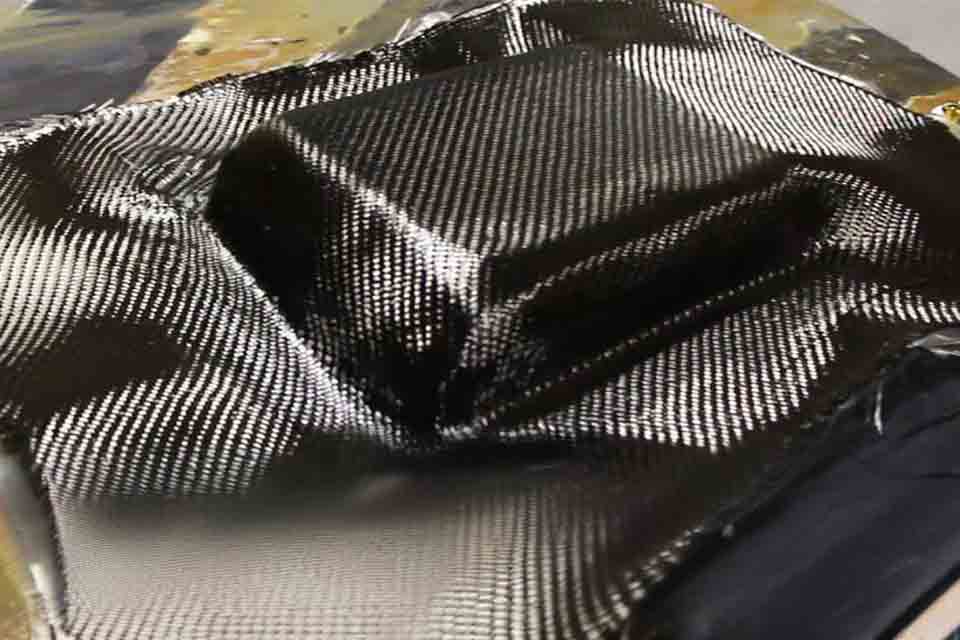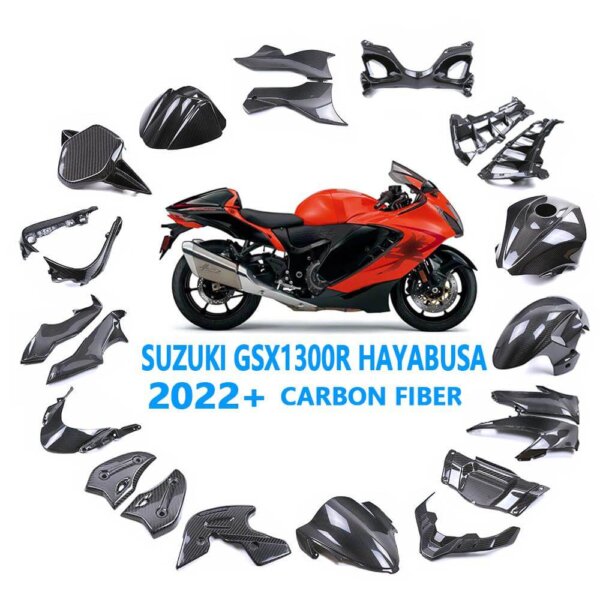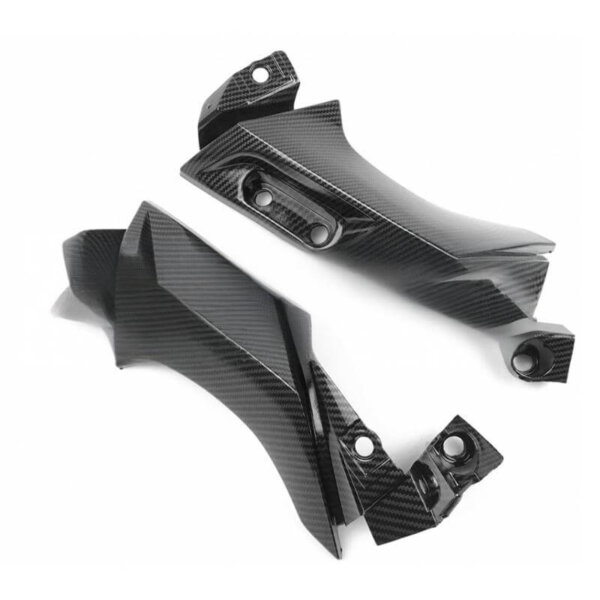Cómo hacer fibra de carbono: Guía sencilla en 10 pasos
¿Qué es la fibra de carbono?
Fibra de carbono es un material resistente y ligero. Está hecho de finas hebras de carbono. Estas hebras son incluso más finas que un cabello humano. Fibra de carbono (también escrito así) se utiliza para fabricar coches, bicicletas, aviones y equipamiento deportivo.
"La fibra de carbono es cinco veces más resistente que el acero, pero pesa mucho menos. Esto la hace perfecta para cosas que necesitan ser fuertes y ligeras a la vez". - Experto en ingeniería
¿Por qué utilizar fibra de carbono?
Fibra de carbono tiene muchos puntos buenos:
- Es muy fuerte
- Es muy ligero
- No se oxida
- Se le puede dar forma de muchas maneras
- Se ve bien
Por eso mucha gente fabricar fibra de carbono piezas para coches, bicicletas y otras cosas.
Qué se necesita para fabricar fibra de carbono
Para trabajar con fibra de carbononecesitas estas herramientas y materiales:
| Herramientas | Materiales |
|---|---|
| Tijeras | Tejido de fibra de carbono |
| Guantes | Resina epoxídica |
| Vasos mezcladores | Cera de liberación |
| Varillas mezcladoras | Moho |
| Cepillo | Lámina de plástico |
| Pinza | Papel de lija |
Pasos básicos para fabricar piezas de fibra de carbono
1. Planifique su proyecto
Antes de empezar con fibra de carbonotienes que saber lo que quieres hacer. Empiece con algo sencillo formas. Las formas grandes o duras pueden ser , que lleva mucho tiempo.
2. Hacer o conseguir un molde
El moho es lo que le da a su piezas de fibra de carbono su forma. Tú puedes:
- Comprar un moho
- Hacer uno de madera
- Utilice una pieza antigua como moho
Poner cera de liberación En tu moho Así que el fibra de carbono no se adherirá a ella.
3. Cortar el tejido de fibra de carbono
Tejido de fibra de carbono se presenta en hojas con diferentes tejer tipos. El más común es tela asargada patrón. Corta la tela a la medida de tu moho y un poco más en los bordes.
4. Mezclar la resina
Resina epoxídica es lo que hace que el fibra de carbono duro y fuerte. La mayoría de resina viene como dos partes mezcla:
- Vierte la parte A y la parte B en una taza
- Mezclar bien pero no demasiado rápido (para evitar burbujas de aire)
- Úsalo pronto, ya que empezará a endurecerse
No se arriesgue Utilice guantes cuando trabaje con resina.

5. Humedezca la fibra de carbono
Ahora viene el laminación en húmedo paso:
- Pon tu tejido de carbono en un lugar plano
- Utilice un cepillo para húmedo el tejido con resina
- Asegúrese de que todos los fibra de carbono se moja
- No utilice demasiada resina - lo suficiente para húmedo todos los fibra
6. Colocar en el molde
Poner el húmedo fibra de carbono En tu moho:
- Empieza por un extremo y alísalo
- Empuje hacia fuera cualquier burbujas de aire
- Añade más capas si necesitas una parte más fuerte
- Cada nueva capa forma parte del layup
7. Eliminar la resina sobrante
Demasiado resina hace que su pieza sea más pesada y no tan resistente. Utilice una herramienta de plástico para resina extra.
8. Aplique presión
Necesita comprimir el fibra de carbono mientras se seca:
- Utilice un bolsa de vacío método
- O utilice abrazadera y tablas planas
- O prueba infusión al vacío para piezas grandes
9. Deja que cure
Ahora espera el resina a curar:
- Compruebe su resina caja para curar tiempo
- La mayoría tarda 24 horas a temperatura ambiente
- Mantenga la pieza quieta mientras cura
- Algunas personas utilizan calor y presión a curar más rápido
10. Retirar del molde
Despues de la resina está completamente duro:
- Quitar cualquier envoltorio o bolsa
- Tire suavemente del pieza acabada del moho
- Recortar las asperezas
- Lije los puntos que necesiten alisarse
Tipos de fibra de carbono
No todos fibra de carbono es el mismo. He aquí los principales tipos:
- PAN (hecho de poliacrilonitrilo)
- Brea (de petróleo)
- Seda artificial (menos común ahora)
La mayoría de los usuarios domésticos trabajan con PAN fibra de carbono.
Diferentes formas de fabricar piezas de fibra de carbono
Hay varias formas principales de trabajar con fibra de carbono. Aquí están, de lo más sencillo a lo más difícil:
Colocación en húmedo
Esto es lo que acabamos de repasar. Es la forma más común para los usuarios domésticos de fabricar piezas de fibra de carbono.

Método Pre-preg
Pre-preg o preimpregnado fibra de carbono viene con resina ya en él. Lo necesita:
- Permanece frío hasta que lo usas
- Se calienta a curar
- A menudo necesita un autoclave (un gran horno caliente)
Así es como muchos pro reforzado con fibra de carbono se fabrican las piezas.
Infusión al vacío
Con este método:
- El seco tejido de fibra de carbono se pone en el moho
- Está sellado en una bolsa
- Se aspira el aire
- Resina es arrastrado hacia infundir todos los fibra
Esto es bueno para piezas grandes y puede dar resultados muy fuertes.
Fabricación de fibra de carbono real desde cero
Los pasos anteriores muestran cómo trabajar con tejido de fibra de carbono que ya está hecho. Pero, ¿cómo fibra de carbono ¿se fabrica? He aquí la fabricación de fibra de carbono proceso:
- Comience con un polímero como poliacrilonitrilo
- Tire de ella en finas filamento cadenas
- Calentar estas cuerdas a fuego fuerte sin aire
- Esto convierte las cadenas en carbón
- El fibra de carbono empieza como único hilo fibras
- Estos son tejido en una tela
Esto necesita equipo especializado y se hace en fábricas.
Consejos de seguridad al trabajar con fibra de carbono
Trabajar con fibra de carbono puede ser divertido, pero hay que estar seguro:
- Utilice guantes al tocar resina
- Use una máscara para evitar respirar polvo de fibra de carbono
- Trabaje en una habitación con buena circulación de aire
- Mantenga los alimentos alejados de su zona de trabajo
- Limpie los derrames de inmediato
Proyectos para probar
Si desea aprenda a fabricar carbón partes, empezar poco a poco:
- Una simple placa plana
- Una funda para el teléfono
- Una caja pequeña
- Una pieza de bicicleta
A medida que mejores, podrás hacer más complejas piezas de fibra de carbono.
Errores comunes que se deben evitar
Muchas personas cometen estos errores:
- Usar demasiado resina
- No conseguir todo burbujas de aire afuera
- Tener prisa durante curar tiempo
- Hacer una pieza demasiado fina y débil
- Probar una forma demasiado compleja para tu nivel de habilidad
Comparación de la fibra de carbono con otros materiales
¿Cómo puede fibra de carbono en comparación con otros materiales de ingeniería?
| Propiedad | Fibra de carbono | Aluminio | Acero | Plástico |
|---|---|---|---|---|
| Peso | Muy claro | Luz | Pesado | Luz |
| Resistencia a la tracción | Muy alto | Medio | Alto | Bajo |
| Compresión fortaleza | Medio | Medio | Alto | Bajo |
| Flexión fortaleza | Alto | Medio | Medio | Bajo |
| Módulo | Alto | Medio | Alto | Bajo |
| Costo | Alto | Medio | Bajo | Muy bajo |
Dónde se utiliza la fibra de carbono
Fibra de carbono se utiliza en muchos lugares donde un material ligero es necesario:
- Aeroespacial piezas para aviones
- Automotor piezas de competición
- Artículos deportivos como raquetas de tenis y palos de golf
- Bicicletas y piezas para bicicletas
- dispositivos médicos
- Equipo de música
Métodos avanzados de fibra de carbono
Si te metes de lleno en fabricación de fibra de carbonopodrías intentarlo:
- Utilizando un CNC para hacer moldes precisos
- Haciendo alto rendimiento piezas con modelos especiales
- Añadir otros materiales para hacer materiales compuestos
- Utilización de diferentes tipos de resina como resina de poliéster o termoestable tipos
Reflexiones finales
Hacer cosas con fibra de carbono puede ser divertido y gratificante. Empieza con algo sencillo, ten paciencia y pronto estarás haciendo cosas increíbles. piezas de fibra de carbono!
El complejidad de la pieza decidirá lo difícil que es de hacer. Con la práctica, se puede hacer rentable y genial producto acabado artículos resistentes y ligeros a la vez.
¿Quieres saber más? Visita nuestra página compuesto a medida o consulte nuestra guía sobre Cómo hacer un molde de fibra de carbono.
¿Listo para empezar? Consiga suministros en nuestro fábrica de carbono u obtenga más información sobre fabrica tus propias piezas de fibra de carbono.
Llámenos/Whatsapp: +86 13626191009
Correo electrónico: [email protected]




